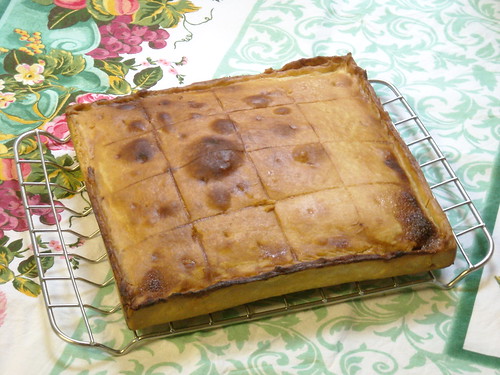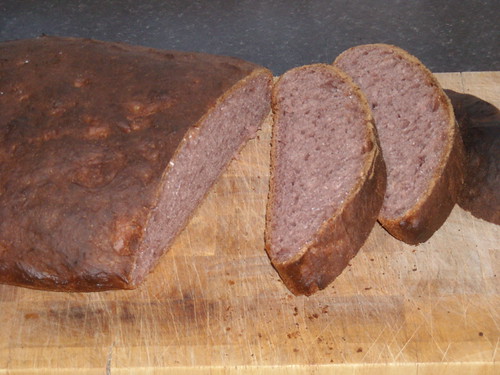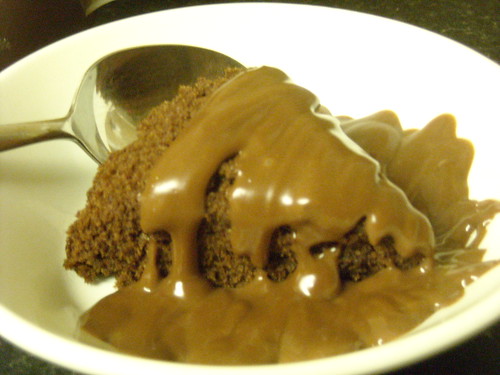 Today's recipe is another dessert which I justify the sugar content of by doing over 100km on my bike on a Sunday morning. I really enjoy my cycling and to do it you need a good amount of carbohydrate in reserve so something such as these Butterscotch Squares is just the thing to keep the legs turning (it doesn't travel well though, so I have to load up beforehand).
Today's recipe is another dessert which I justify the sugar content of by doing over 100km on my bike on a Sunday morning. I really enjoy my cycling and to do it you need a good amount of carbohydrate in reserve so something such as these Butterscotch Squares is just the thing to keep the legs turning (it doesn't travel well though, so I have to load up beforehand).The recipe is another one of those passed down to me by my mother and, probably, from her mother before that. I may have already mentioned that I come from good baking stock, so there are a number of these recipes that I really associate with my childhood and which are, to me, quintessentially English.
This one refers again to shortcrust pastry, the simplest of pastries and something I have posted on before. Though if you are still too worried/lazy to make it yourself it is available ready-made in most supermarkets. The key to getting a quality product with this recipe is to make sure the egg is well beaten in and to put plenty of holes in the top to stop the air getting trapped inside and lifting the pastry off the filling (something I didn't manage on this occasion as I added the glaze after the holes; schoolboy error). Despite this it is a quick and easy recipe, one to do if the oven is already on for some bread, as I did, and will still taste great even if the pastry is a little crumbly, puffy or soggy. Make sure you grease a square tin well to make it easy to get out afterwards. It is obviously not imperative to use a square tin, though with 'squares' in the name it does ask for it, chuck it into whatever receptacle you have to hand that can withstand 200C and has a similar area.
Till next time: keep up the baking, keep it traditional and try something new (to you).

